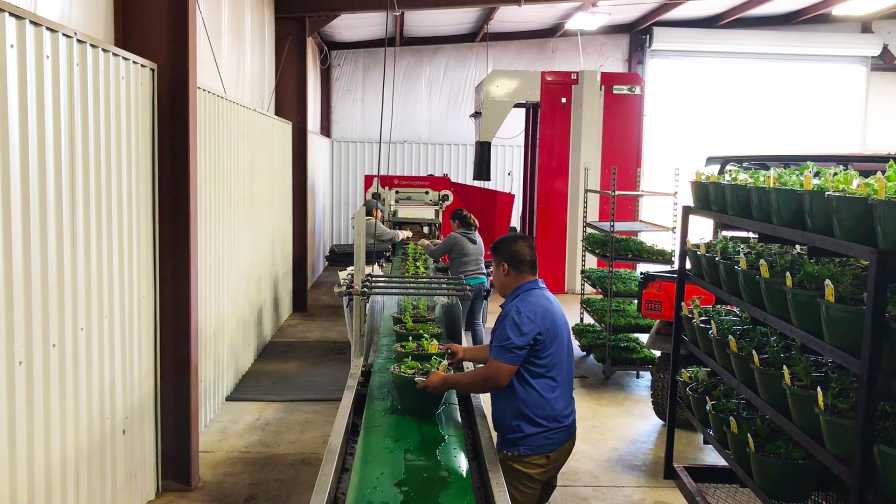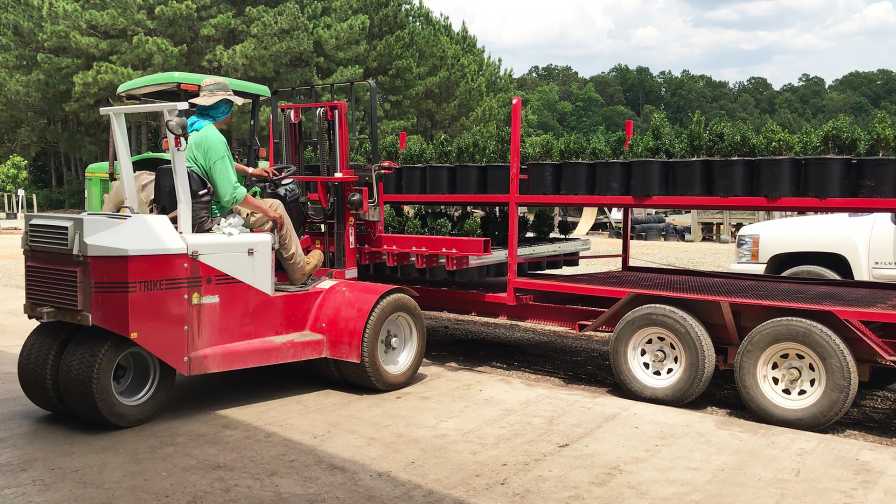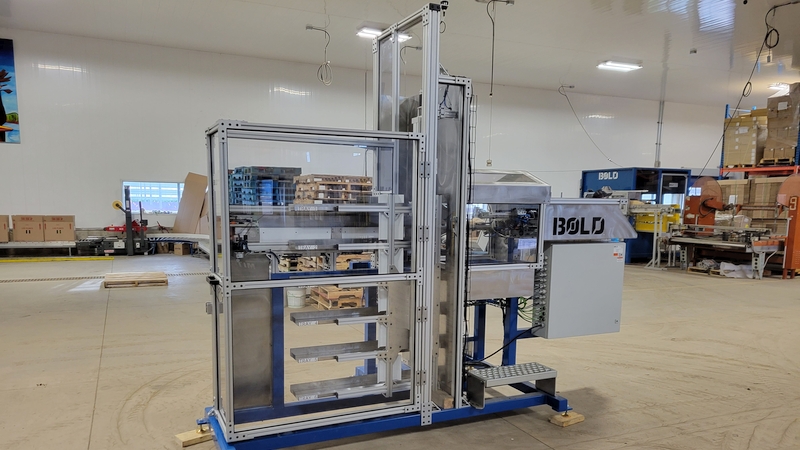Ways Plant Production Automation Can Ease Your Labor Concerns

Material handling is the hardest process to automate in the greenhouse, but it also has the highest returns if you can figure it out.
Photo courtesy of AgriNomix
The words production automation can sound intimidating for any size grower. You may get pictures in your mind of elaborate systems with robots moving things around in a factory, and in some ways, that is true. For most growers, it is more about production efficiencies and what automation tools you can add to your operation to allow you to get your production done on time and with less labor.
In an ideal balance of labor versus automation, the goal would be to get your production done with your year-long staff and not need to increase the number of employees for peak production. To get to this goal, you need to understand your operation and the challenges you face day to day, season to season, and year to year. What are the steps in your production process that are labor-intensive? What jobs seem to consume more labor hours than you have available?
Once you have identified these labor-intensive processes, it is time to do some research. Have you found the most efficient way to complete the tasks? If so, can you add automation to do the process faster or with fewer people? Are you qualified to answer these questions?
It is prevalent for owners and managers to overlook these questions or assume that their operation is already the most efficient. The assistance of a fresh pair of eyes looking at your operating procedures will help you find the answers you are seeking and advise you as to the automation tools that will fit your goals. This process should be a consultative relationship where both the grower and supplier are in it for success. The best automation is worthless if it is not appropriately applied or supported 100% by the grower and their staff.

In the last few years, conveyors, forks, and spacing robots have grown in popularity because they work and reduce labor.
Photo courtesy of AgriNomix
Issues to Address With Your Equipment
Here are some of the most common items that come out of evaluations:
Flat and Pot Filling: Are you filling by hand or machine? Is your process fast enough? If a machine, does it fill all the pot sizes you require? Is it easy to use? Flat and pot filling is a commonly overlooked area, as many growers settle for “that is how we have always done it.” Modern fillers can fill a wide range of containers and handle just about any media.
Planting Lines/Transplanters: Are you planting on the bench or a line? Would a line make you more efficient? Is your planting line long enough to allow for your planting to be done comfortably? Would a transplanter fit 60% to 80% of your needs? If you have a transplanter, does it still fit your production plan? How you plant should be looked at every year, as there are small advances in machines and techniques. Dibblers for finish product planting are a good example; they have made hand planting very uniform to ensure a consistent quality finish product.
Trimming/Pinching: Do you trim/pinch by hand or machine? Do you get trimming/pinching done on time? Is it done consistently, and does it produce high-quality plants? How much does it really cost you (time it sometime)? Can it be done with a trimmer? If you have a trimmer, does it fit your needs, or could you use it more? In many operations, trimming is overlooked as you get busy, and this reduces the quality of your crops. Automation for trimming of plants is one of the highest returns on investment items from the little amount of labor it requires and consistent trims. Trimmers also reduce the need for plant growth regulators and allow you to stage your crops.
Material Handling: How do you move pots/trays around your operation? By hand, cart, conveyor, forks, or robot? How many times are you touching the same pot during a crop cycle? Are you growing on benches, and how are you loading/unloading those benches? If by hand, how much does it cost you to carry pots from the aisle to the final location on the bench and back to the aisle to ship? Material handling is the hardest process to automate and also has the highest returns if you can figure it out. With the current labor concerns, the more you can reduce the number of touches and the amount one person can move at a time, the more value you are getting out of your laborer. Try to place plants in the area where you plan to finish them.
To embrace automated material handling, you may have to make some significant changes to your operation. If you have fixed or side-to-side benches, you may want to remove them, as they require expensive labor to carry pots in and out of them. In the last few years, conveyors, forks, and spacing robots have grown in popularity because they work and reduce labor.
As labor concerns get greater, and consumers demand competitive pricing, this opens the door for new technology. What used to be a dream is becoming a reality. The industry will embrace robots of all kinds to get production done. Current automation equipment will improve and become more user-friendly.
What does the future hold for production automation in your growing operation? That all depends on you. If you and your staff are supporters of it, great results will happen.









